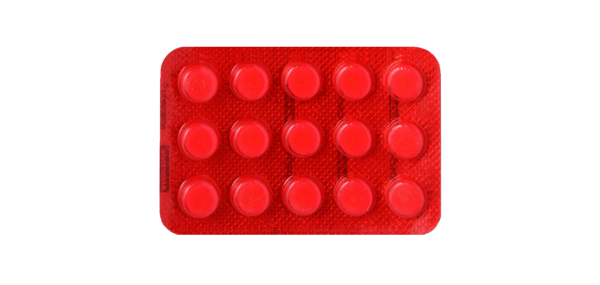

Every morning I take spironolactone, a blood pressure pill, not for my blood pressure (normal) but for my endocrine system (destroying my life with a testosterone flood). As I swallow the orange circle, I think about how weird and cool and fucked up medicine can be, which is what this column is about, so hello, I’d like to start here.
Here is 1959, when spironolactone (“Spee-ro” and “Spy-ro” both sound sophisticated IMHO) was born as a potassium-sparing diuretic for the treatment of high-blood pressure. What does that mean, exactly? Think of a blood vessel as a garden hose: when you put a thumb over the nozzle, water builds up and pressure increases. When you drain water, pressure decreases. A diuretic is any substance that makes you pee, thus removing water from the body. When it comes to spironolactone, the “potassium-sparing” part refers to keeping potassium from getting thrown out, too.
Spironolactone is also a specific kind of diuretic: a synthetic steroid mineralocorticoid receptor antagonist. Let’s break this down. A synthetic steroid is a compound that can be produced in a lab and that, when introduced to the body, behaves like a hormone. Mineralocorticoids, which influence the amounts of salt and water stored in the body, are a type of steroid normally produced in the adrenal glands. (“Ad” = adjunct, “renal” = kidneys–they’re li’l buddies that sit on top of the kidneys.) A receptor antagonist blocks other molecules from binding to the receptors, which are the outward-facing parts of cells that trigger changes in cell behavior. In order to access receptors, synthetic spironolactone molecules compete with molecules of organic aldosterone, a naturally produced adrenal hormone that holds on to salt and water. When spironolactone wins, salt and water lose.
Except: causes of hypertension (high blood pressure) are usually multifactorial, and reducing salt and water in the body doesn’t really do too much to solve the problem. In fact, prescribing spironolactone alone for hypertension is strongly discouraged, because it . . . kind of sucks at that. Also noted at the time of its introduction were spironolactone’s now well-known sexual side effects: breast pain and gynecomastia (growth of male breast tissue) in men and menstrual irregularities in premenstrual women. Spironolactone is not very “specific,” which is to say that it’s shaped kinda like all the steroid hormones. When it shows up, testosterone (and progesterone, and cortisol) receptors are like “good enough!” and bind with it.
So that’s spironolactone’s big 1959 debut: available to the public as a shitty blood pressure drug that nobody should use because it did weird stuff with people’s sex hormones. But, while pharmaceutical companies typically submit medications to the FDA for a single and specific indication (in the case of spironolactone, lowering blood pressure), approval means the drug can be prescribed for any reason. After the FDA says yes? That’s when the label comes off, baby.
A 2012 paper from Mayo Clinic Proceedings describes the practice of “off-label use” as “prescribing currently available and marketed medications but for an indication (e.g., a disease or a symptom) that has never received Food and Drug Administration (FDA) approval.” A 1987 paper published in Fertility and Sterility notes that “a number of fortuitous clinical observations during the past two decades indicated that administration of spironolactone improved hirsutism and acne vulgaris.” (“Hirsutism” means “excessive” body hair; “acne vulgaris” is just a ruder medical way to say acne.) The paper goes on to present evidence of the drug’s antiandrogenic properties–that is, anti-testosterone properties–”that previously had been disregarded,” and affirms spironolactone’s “increasingly widespread use” as an antiandrogen, rather than as a hypertension treatment.
During a clinical trial, anything–anything–reported by at least one percent of participants is listed by the FDA as a side effect or adverse event. While the terms “side effect” and “adverse event” are often used interchangeably, they are distinct. I’m gonna call neutral-to-beneficial responses “side effects” and harmful responses “adverse reactions.”

Spironolactone sucks enough at reducing blood pressure that when it’s prescribed for reasons other than hypertension, simply advising patients to drink more water and watch out for dizziness while sitting or standing up is sufficient to counteract any effects the drug may have on blood pressure. Sometimes prescribers forget entirely to tell their patients that the drug was originally intended as a blood pressure-lowering water pill. I recently saw a patient for a possible urinary tract infection. Spotting spironolactone on her medication list, I asked how long she’d been on it (two weeks) and when the frequent urination began (one week). “Yeah, I started the medication right before this happened,” she said. “Could it have something to do with it?”
Spironolactone’s two main off-label uses are for hirsutism and acne (especially hormonal acne, as the body parts affected by this are where testosterone makes hair grow–the chin, back, and chest). These conditions can occur on their own or as part of a syndrome like the one I have: polycystic ovary syndrome (PCOS). I run a little more testosterone-y than most people born with ovaries and a uterus; that l’il extra T exposure freaks out all the other hormones, and can cause body hair growth, scalp hair loss, infertility, ovarian cysts, and insulin resistance. Spironolactone is also the most commonly used antiandrogen in the United States to block testosterone during gender hormone therapy and to encourage development of secondary sex characteristics, such as breasts.
Sometimes, a pharma company ends up finding out about its unintended side effects or off-label uses and asking itself, “Since our drug is being used to treat something else and/or to get high, would pursuing this as a new FDA indication make us bananas money?” If the answer is yes, this is known as drug repositioning, and there are a million fun examples. For example, Viagra (sildenafil) was in trials as an angina treatment until the researchers could not ignore the consistency of the boners that were happening. Rogaine, which treats hair loss, was originally minoxidil, which causes vasodilation, another hypertension treatment.
Gender hormone therapy is not thought to be a moneymaker–no medications are FDA approved for the purpose–and the resulting lack of trials and data means that patients themselves often provide the expertise, and must bear the burden of being the sole experts on their own bodies and often on their care as well. (A conference presenter I saw once described transgender health care as “the research-free zone.”) Post-marketing patient-led explorations of off-label use range from googling “Can [pill] get me high?” to doing the work that pharmaceutical companies, scientists, researchers, and providers should do but don’t.
Spironolactone is as old as my dad. It was born to do something specific–treat hypertension–but did it so poorly that it was only later remembered for its weird adverse effects. Yet one person’s adverse effect (growing breasts in those assigned male at birth) is another’s therapeutic target (growing breasts in those assigned male at birth). Today, those who use spironolactone for it’s most common indication (breast growth) have their own adverse effects (does it grow breasts enough?) Along the way, doctors also figured out that spironolactone is also pretty good for heart failure–becoming one of the WHO’s Essential Medicines for this indication. But the drug itself hasn’t changed since 1959. What’s changed, instead, is us.


How We Get To Next was a magazine that explored the future of science, technology, and culture from 2014 to 2019. This article is part of our “Health” Beat, which examines how we can increase access to and quality of health care across the globe. For more dispatches, click the logo.
